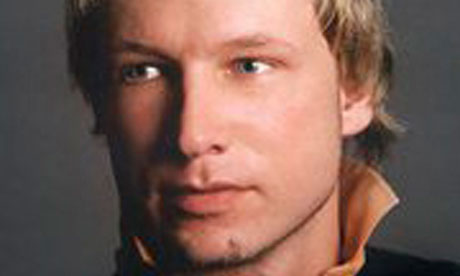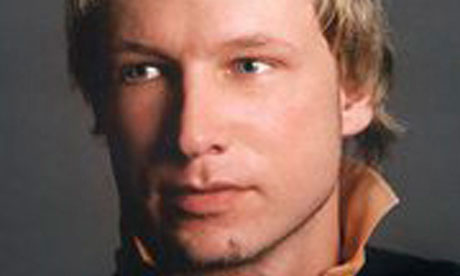Các quốc gia Bắc Âu (Nordics) nổi tiếng trên thế giới về những cố gắng để xây dựng xã hội bình đẳng và hiếu hòa với nhiều chương trình di dân hào phóng.
Bắc Âu gồm có 5 quốc gia Đan Mạch, Phần Lan, Băng Đảo, Na Uy, Thụy Điển và 3 vùng tự trị Đảo Faroe, Greenland, Alan. Tuy nhiên, thực tế danh từ Bắc Âu thường dùng để chỉ cho Na Uy, Đan Mạch, Thụy Điển dù Greenland chiếm 60% diện tích Bắc Âu.
Bắc Âu có 26 triệu dân, lợi tức bình quân 62,000 USD. Nguồn lợi dồi dào từ dầu hỏa đẩy Na Uy lên hạng 4 trên thế giới về lợi tức đầu người. Thụy Điển, Đan Mạch, Phần Lan đều ở trong nhóm 25 quốc gia hàng đầu trên thế giới.
Na Uy, Đan Mạch và Thụy Điển từng hãnh diện làm nơi để người tị nạn chính trị từ các khu vực xung đột khắp thế giới đến cư trú gồm hàng mười ngàn người A Phú Hãn, Iraq, Somalia và Balkans. Hiếm khi, dân Bắc Âu công khai bày tỏ chủ nghĩa phân biệt chủng tộc vốn bị coi như điều cấm kỵ.
Tuy nhiên, trong những năm gần đây, xu hướng chống di dân ngày càng gia tăng thể hiện qua sự phát triển của các lực lượng cực hữu trong vùng Bắc Âu.
Năm 2010, Đảng Dân Chủ Thụy Điển lần đầu tiên có đại diện trong Quốc Hội. Đảng Cấp Tiến Na Uy chiếm 23% ghế, đứng hạng nhì trong Quốc Hội. Đảng Nhân Dân Đan Mạch được gấp đôi số ghế trong Quốc Hội. Đảng Sự Thật của Phần Lan thắng 41 ghế trong Quốc Hội, tăng 6 so với kỳ trước.
Thủ đô 4 quốc gia Bắc Âu này nằm trong nhóm thành phố đáng sống nhất trên quả địa cầu với các chương trình phúc lợi xã hội tạo sự an nhàn, sung túc ngay cả với cư dân đứng ngoài lề cuộc sống.
Chính đời sống dễ dãi tại Bắc Âu trở thành lý do cho các nhóm cực hữu thu hút tuổi trẻ vốn nhìn sự việc dưới lăng kính đen/trắng. Giai đoạn từ 2008 đến 2011, tội ác liên quan đến hoạt động bài ngoại giảm 10% trong khi các trang nhà ủng hộ thuyết thượng đẳng da trắng (white-supremacist) tăng một phần ba. Hơn 20% giới trẻ trong đảng Dân Chủ Thụy Điển có liên hệ với các phần tử quá khích. Tổ chức Denmark’s Frit tuyên bố tiếp tục huấn luyện sử dụng vũ khí để hội viên có thể chống lại bọn “trộm cắp và Hồi giáo”.
Các đợt di cư từ Tây Âu lên Bắc Âu từ thế kỷ thứ 15 đã tạo một sự đồng nhất về tín ngưỡng với 84% dân cư theo đạo Tin Lành, nhưng, hiện thời tình trạng Hồi-giáo-hóa đang gia tăng mau lẹ.
Na Uy với dân số 5 triệu, lợi tức bình quân 84,000 USD, xuất cảng đứng hạng 5 trên thế giới về dầu hỏa, hạng 3 về khí đốt. Năm 1970, di dân chiếm 2% dân số mà hiện nay đã lên tới 11%.
Tuy mới có 163,000 người, chiếm 3.4% dân số Na Uy, nhưng, tốc độ Hồi-giáo-hóa đang gây lo ngại trong quốc gia đa số theo Tin Lành mà chỉ có 2% tín đồ đến Nhà thờ hàng tuần.
Khác với phong trào di cư của người Châu Âu trước kia, di dân trong thế kỷ 21 ít thích hội nhập vào nền văn hóa của quốc gia sở tại mà cương quyết duy trì lối sống của quê cũ từ phong tục, tập quán cho chí tín ngưỡng. Thậm chí, họ còn tạo ra những ốc đảo trong xã hội mới.
Lãnh tụ đảng Nhân Dân Đan Mạch, Pia Kjaersgaard từng chế nhạo các thành phố ở Thụy Điển giống như “Beirut Bắc Âu”.
Di dân khai thác triệt để phúc lợi xã hội và thể chế tự do, dân chủ ở Bắc Âu để yểm trợ cho các tổ chức Hồi giáo quá khích khắp địa cầu; duy trì và phát triển văn hóa Hồi giáo nên tạo ra sức phản kháng của sắc dân truyền thống Bắc Âu.

Anders Behring Breivik
Vụ Peter Mangs bắn chết một và làm bị thương 10 người tại thành phố Malmo của Thụy Điển hồi năm ngoái và vụ Anders Behring Breivik đánh bom vào khu chính phủ Na Uy rồi sát hại 77 thanh thiếu niên tại trại hè hôm 22 tháng 7 với dòng máu lạnh đã đánh dấu một cuộc khủng hoảng văn hóa tại Bắc Âu.
Các nhóm di dân không theo Đạo Hồi dễ hội nhập vào xã hội mới vì họ chấp nhận sự dị biệt trong cuộc sống và sẵn sàng tìm mọi cách dung hòa.
Xu hướng chống xã hội đa văn hóa, chống di dân ngày càng gia tăng tại Bắc Âu nên các chính chính trị gia, dù có xu hướng trung hữu, vẫn không che dấu những lời phát biểu cay nghiệt, gay gắt đối với các nhóm di dân, đặc biệt với Hồi giáo.
Những loại người như Anders Breivik sợ bị Hồi-giáo-hóa nên hành động đơn phương hoặc phối hợp lỏng lẻo với các phần tử cùng chung mục đích chống Hồi-giáo-hóa xã hội.
Trước cuộc điều trần đầu tiên tại Tòa án ở Oslo, thủ đô Na Uy, sát thủ Breivik, 32 tuổi, thản nhiên bác bỏ trách nhiệm hình sự trong 3 giờ đồng hồ truy giết những thanh niên không một tấc sắt trong tay.
Breivik tự biện minh cho hành động giết người nhằm mục tiêu thực hiện cuộc cách mạng trong xã hội Na Uy. Thủ phạm máu lạnh này đã viết trên 1,500 trang tuyên ngôn và phổ biến cuốn video Hiệp sĩ Công lý 2083 với lời lẽ sắt máu “trước khi bắt đầu cuộc thập tự chinh, chúng ta phải phá hoại văn hóa của chủ nghĩa mác”.
Đảng Lao Động đang cầm quyền tại Na Uy đã mở trại Hè để huấn luyện cho hậu duệ nên trở thành mục tiêu thanh toán của Breivik.
Thủ tướng Jens Stoltenberg của đảng Lao Động tuyên bố “Chúng ta bênh vực cho một nền dân chủ và xã hội cởi mở, loại bạo lực đó không dọa được ai”.
Xu hướng chống văn hóa đa chủng, chống di dân ngày càng gia tăng tại Na Uy cũng như Châu Âu, Hoa Kỳ, Úc Đại Lợi.
Liệu tín đồ Hồi giáo có nhận được thông điệp này trong dịp chay tịnh Ramadan hay không khó mà đoán biết.
Quả đất vẫn quay, các bộ óc cuồng tín cứ tiếp tục đầu độc dư luận và lúc nào cũng có những tâm hồn bệnh hoạn đi theo.
ĐẠI-DƯƠNG
Anders Behring Breivik
Born 13 February 1979), Anders Behring Breivik is a Norwegian right-wing extremist and the confessed perpetrator of dual terrorist attacks in Norway on 22 July 2011: the bombing of government buildings in Oslo that resulted in 8 deaths, and the mass shooting at a camp of the Workers’ Youth League (AUF) of the Labour Party on the island of Utøya where he killed 69 people, mostly teenagers.
Breivik’s far-right militant ideology is described in a compendium of texts, titled 2083 – A European Declaration of Independence and distributed electronically by Breivik on the day of the attacks under the anglicised pseudonym Andrew Berwick. In it he lays out his xenophobic worldview, which includes support for varying degrees of cultural conservatism, right-wing populism, ultranationalism, crusades, Islamophobia, far-right Zionism and Serbian paramilitarism. It regards Islam and “cultural Marxism” as the enemy, and argues for the violent annihilation of “Eurabia” and multiculturalism, to preserve a Christian Europe. A video Breivik released on Youtube 6 hours before the attack, has been described as promoting violence towards Muslims and Marxists who reside in Europe.
Breivik has confessed to what he calls “atrocious but necessary” actions, but denies criminal responsibility. Breivik claimed contact with Norwegian and international far-right political movements, and claims to belong to an international anti-Islam network with two cells in Norway and more in other countries. Police and experts doubt these claims but have not dismissed them completely.
On 25 July 2011, Breivik was charged with “destabilising or destroying basic functions of society” and “creating serious fear in the population”, acts of terrorism under the criminal law, and ordered held for eight weeks—the first four in solitary confinement—pending further court proceedings. Prosecutors are considering charging him with crimes against humanity under a 2008 law.
A vile logic to Anders Breivik’s choice of target

In Anders Behring Breivik’s ideological self-justification as well as in reactions to his murderous act there are things that should make us think. The manifesto of this Christian “Marxist hunter” who killed more than 70 people in Norway is precisely not a case of a deranged man’s rambling; it is simply a consequent exposition of “Europe’s crisis” which serves as the (more or less) implicit foundation of the rising anti-immigrant populism – its very inconsistencies are symptomatic of the inner contradictions of this view.
The first thing that sticks out is how Breivik constructs his enemy: the combination of three elements (Marxism, multiculturalism and Islamism), each of which belongs to a different political space: the Marxist radical left, multiculturalist liberalism, Islamic religious fundamentalism. The old fascist habit of attributing to the enemy mutually exclusive features (“Bolshevik-plutocratic Jewish plot” – Bolshevik radical left, plutocratic capitalism, ethnic-religious identity) returns here in a new guise.
Even more indicative is the way Breivik’s self-designation shuffles the cards of radical rightist ideology. Breivik advocates Christianity, but remains a secular agnostic: Christianity is for him merely a cultural construct to oppose Islam. He is anti-feminist and thinks women should be discouraged from pursuing higher education; but he favours a “secular” society, supports abortion and declares himself pro-gay.
His predecessor in this respect was Pim Fortuyn, the Dutch rightist populist politician who was killed in early May 2002, two weeks before elections in which he was expected to gain one fifth of the votes. Fortuyn was a paradoxical figure: a rightist populist whose personal features and even opinions (most of them) were almost perfectly “politically correct”. He was gay, had good personal relations with many immigrants, displayed an innate sense of irony – in short, he was a good tolerant liberal with regard to everything except his basic stance towards Muslim immigrants.
What Fortuyn embodied was thus the intersection between rightist populism and liberal political correctness. Indeed, he was the living proof that the opposition between rightist populism and liberal tolerance is a false one, that we are dealing with two sides of the same coin: ie we can have a racism which rejects the other with the argument that it is racist.
Furthermore, Breivik combines Nazi features (also in details – for example, his sympathy for Saga, the Swedish pro-Nazi folk singer) with a hatred of Hitler: one of his heroes is Max Manus, the leader of the Norway anti-Nazi resistance. Breivik is not so much racist as anti-Muslim: all his hatred is focused on the Muslim threat.
And, last but not least, Breivik is antisemitic but pro-Israel, as the state of Israel is the first line of defence against the Muslim expansion – he even wants to see the Jerusalem temple rebuilt. His view is that Jews are OK as long as there aren’t too many of them – or, as he wrote in his manifesto: “There is no Jewish problem in western Europe (with the exception of the UK and France) as we only have 1 million in western Europe, whereas 800,000 out of these 1 million live in France and the UK. The US, on the other hand, with more than 6 million Jews (600% more than Europe) actually has a considerable Jewish problem.” He realises the ultimate paradox of a Zionist Nazi – how is this possible?
A key is provided by the reactions of the European right to Breivik’s attack: its mantra was that in condemning his murderous act, we should not forget that he addressed “legitimate concerns about genuine problems” – mainstream politics is failing to address the corrosion of Europe by Islamicisation and multiculturalism, or, to quote the Jerusalem Post, we should use the Oslo tragedy “as an opportunity to seriously re-evaluate policies for immigrant integration in Norway and elsewhere”. The newspaper has since apologised for this editorial. (Incidentally, we are yet to hear a similar interpretation of the Palestinian acts of terror, something like “these acts of terror should serve as an opportunity to re-evaluate Israeli politics”.)
A reference to Israel is, of course, implicit in this evaluation: a “multicultural” Israel has no chance to survive; apartheid is the only realistic option. The price for this properly perverse Zionist-rightist pact is that, in order to justify the claim to Palestine, one has to acknowledge retroactively the line of argumentation which was previously, in earlier European history, used against the Jews: the implicit deal is “we are ready to acknowledge your intolerance towards other cultures in your midst if you acknowledge our right not to tolerate Palestinians in our midst”.
The tragic irony of this implicit deal is that, in the European history of last centuries, Jews themselves were the first “multiculturalists”: their problem was how to survive with their culture intact in places where another culture was predominant.
But what if we are entering an era where this new reasoning will impose itself? What if Europe should accept the paradox that its democratic openness is based on exclusion – that there is “no freedom for the enemies of freedom”, as Robespierre put it long ago? In principle, this is, of course, true, but it is here that one has to be very specific. In a way, there was a vile logic to Breivik’s choice of target: he didn’t attack foreigners but those within his own community who were too tolerant towards intruding foreigners. The problem is not foreigners, it is our own (European) identity.
Although the ongoing crisis of the European Union appears as a crisis of economy and finances, it is in its fundamental dimension an ideologico-political crisis: the failure of referendums about the EU constitution a couple of years ago gave a clear signal that voters perceived the EU as a “technocratic” economic union, lacking any vision which could mobilise people – until the recent protests, the only ideology able to mobilise people was the anti-immigrant defence of Europe.
Recent outbursts of homophobia in eastern European post-communist states should also give us pause for thought. In early 2011, there was a gay parade in Istanbul where thousands walked in peace, with no violence or other disturbances; in gay parades which took place at the same time in Serbia and Croatia (Belgrade, Split), police were not able to protect participants who were ferociously attacked by thousands of violent Christian fundamentalists. These fundamentalists, not Turkey’s, are the true threat to the European legacy, so when the EU basically blocked Turkey’s entry, we should ask the obvious question: what about applying the same rules to eastern Europe?
Antisemitism belongs to this series, alongside other forms of racism, sexism, homophobia, etc. The state of Israel is here making a catastrophic mistake: it decided to downplay, if not completely ignore, the “old” (traditional European) antisemitism, focusing instead on the “new” and allegedly “progressive” antisemitism masked as the critique of the Zionist politics of the state of Israel. Along these lines, Bernard Henri-Lévy (in his Left in Dark Times) recently claimed that the antisemitism of the 21st century would be “progressive” or not exist at all. This thesis compels us to turn around the old Marxist interpretation of antisemitism as a mystified anti-capitalism (instead of blaming the capitalist system, the rage is focused on a specific ethnic group accused of corrupting the system): for Henri-Lévy and his partisans, today’s anti-capitalism is a disguised form of antisemitism.
This unspoken but no less efficient dismissal of those who would attack the “old” antisemitism is taking place at the very moment when the “old” antisemitism is returning all around Europe, especially in post-communist eastern European countries, from Hungary to Latvia. Something that should worry us even more is the rise of a weird accommodation between Christian fundamentalists and Zionists in the US.
There is only one solution to this enigma: it is not that the US fundamentalists have changed, it is that Zionism itself has paradoxically come to adopt some antisemitic logic in its hatred of Jews who do not fully identify with the politics of the state of Israel. Their target, the figure of the Jew who doubts the Zionist project, is constructed in the same way as the European antisemites constructed the figures of the Jew – he is dangerous because he lives among us, but is not really one of us. Israel is playing a dangerous game here: Fox News, the main US voice of the radical right and a staunch supporter of Israeli expansionism, recently had to demote Glenn Beck, its most popular host, whose comments were getting openly antisemitic.
The standard Zionist argument against the critics of the policies of the state of Israel is that, of course, like every other state, Israel can and should be judged and eventually criticised, but that the critics of Israel misuse the justified critique of Israeli policy for antisemitic purposes. When the Christian fundamentalist supporters of the Israeli politics reject leftist critiques of Israeli policies, their implicit line of argument is illustrated by a wonderful cartoon published in July 2008 in the Viennese daily Die Presse: it shows two stocky, Nazi-looking Austrians, one of them holding in his hands a newspaper and commenting to his friend: “Here you can see again how a totally justified antisemitism is being misused for a cheap critique of Israel!” These are today’s allies of the state of Israel.
Slavoj Žižek
guardian.co.uk, Monday 8 August 2011













































